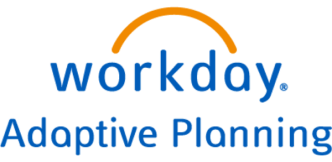Table of Contents
Modern finance functions are at a crossroads.
With shifting markets, evolving customer expectations, and relentless disruption, financial planning is expected to do more than just deliver numbers. It’s expected to steer strategy, enable agility, and act as a stabilising force for the entire organisation. But that’s only possible if the foundations are solid. And in many cases, they’re not.
Transformation leads face a difficult paradox. While the business accelerates, financial planning often stalls. The causes are not always obvious, which is why these gaps continue to disrupt even the most well-intentioned transformation efforts. Agile modelling, dynamic forecasting, and real collaboration are frequently discussed, but rarely executed well.
Here are five of the most persistent and hidden planning breakdowns that can derail transformation at the root.
1. Limited Agile Modelling Capabilities
Most planning tools weren’t built for rapid change; they were built for consistency, and that’s a problem.
In today’s business climate, assumptions shift quickly. Teams need to model new possibilities at a moment’s notice. Agile modelling enables this kind of rapid scenario testing. Without it, planning becomes an exercise in catching up. Finance is stuck tweaking static spreadsheets instead of exploring the real what-ifs.
When planning tools can’t flex, leaders lose the ability to adjust forecasts mid-cycle. The result is slower responses, reactive thinking, and a finance function that struggles to lead through change. Dynamic forecasting doesn’t happen in systems that are built for stability over speed. And that disconnect costs time, confidence, and momentum.
2. Collaboration Barriers Across Teams

Planning requires perspectives from across the business, but too often those perspectives remain locked in departmental silos.
Finance, operations, HR, and IT all have their own priorities, and without a shared platform for planning, their inputs become fragmented. Collaboration becomes a coordination headache. People work from different numbers and use different assumptions, which only leads to friction and delays.
Cross-functional teams need more than a meeting invite. They need integrated systems that promote visibility and accountability. When collaboration improves, plans become more resilient, less biased, and far more grounded in real operational dynamics.
3. Version Control and Audit Friction
Transformation demands trust in the numbers, but that trust erodes quickly when multiple versions of a plan float around without clarity on what changed or why.
Version control challenges often seem minor until they aren’t. A single misalignment between versions can lead to misguided decisions, especially when timing matters. Without clean audit trails, change management becomes guesswork. And when leaders start second-guessing the data, confidence in planning as a whole declines.
Strong version control isn’t just about documentation; it’s about creating transparency. Everyone should know what changed, when it changed, and who changed it. That clarity allows finance to move quickly without losing control.
4. Disconnected Data Sources
Data is everywhere, but too often, it isn’t where it needs to be. Disconnected systems, inconsistent definitions, and manual transfers still plague many organisations.
Planning built on outdated or inaccurate data can’t support dynamic forecasting. It forces teams to spend time validating numbers instead of making decisions. Worse, it introduces doubt at the exact moment finance needs to be decisive.
Strong data integration allows the planning process to reflect current reality. With unified data, forecasting becomes not only faster, but more accurate. And that means decisions can happen with greater speed and confidence.
5. Weak Alignment with Strategy
Finance can deliver beautiful models and polished reports, but if the numbers aren’t tied to business goals, the planning effort falls flat.
Too many planning processes reflect operational habits rather than strategic ambition. Budgets are built on last year’s actuals, forecasts are padded, and the bigger picture is lost. When finance and strategy are disconnected, transformation gets harder. Initiatives lack support. KPIs feel misaligned. Momentum stalls.
The most effective planning processes are the ones that mirror the company’s strategic goals at every step. Plans should reflect where the business is going, not just where it’s been. And when they do, finance becomes a more valuable partner in shaping that journey.

Why These Gaps Are Bigger Than They Seem
For transformation leads, these issues are more than technical annoyances. They are signals that the planning environment may not be equipped to support the speed and complexity of modern business.
When agile modelling isn’t available, the business can’t pivot. When dynamic forecasting isn’t grounded in real-time data, decisions get delayed. When teams don’t collaborate, the right people aren’t influencing the plan. And when planning is misaligned with strategy, even the best financial models will fail to drive change.
These aren’t isolated problems. They feed into each other, compounding risk and slowing transformation efforts just when speed matters most.
Best Practices to Bridge the Gaps
Every organisation faces planning challenges. The difference lies in how quickly and effectively they’re addressed.
Here are some best practices transformation leads can apply now:
Agile Modelling Tools
Invest in platforms that support scenario flexibility. Workday Adaptive Planning, for example, enables real-time modelling that allows teams to test assumptions and update forecasts without delay.
Promote Collaboration
Build a shared environment for planning across departments. Cross-functional planning reduces duplication and increases accountability.
Standardise Version Control
Ensure planning platforms have built-in change tracking and audit trails. This creates consistency and trust across teams and leadership.
Unify Data Sources
Integrate planning tools with key data systems. Seamless data flow cuts out manual work, improves accuracy, and speeds up forecasting.
Tie Planning to Strategy
Make strategic goals visible within the planning process. Connect key forecasts and assumptions directly to business objectives.
These best practices aren’t just technical upgrades. They’re cultural shifts. And they’re necessary to move planning from a back-office function to a transformation enabler.
Closing Thoughts
The finance function is expected to lead with insight and agility, but that only happens when planning is equipped to meet the moment. Agile modelling and dynamic forecasting aren’t just trends—they are structural necessities for transformation success.
For transformation leads, the planning environment is either an accelerator or a bottleneck. The five gaps above may be hidden, but they are deeply impactful. Spotting them early, addressing them thoughtfully, and embedding best practices can create real momentum across the organisation.
Now is the time to assess. Ask tough questions about what planning looks like today. Push for tools and processes that match the pace of change. Because transformation isn’t waiting, and planning needs to be ready to lead it.





